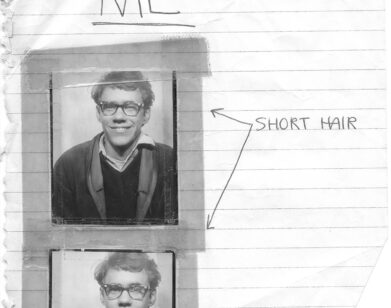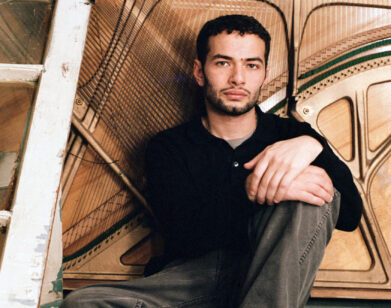Gabriel Orozco: Natural Man

“The animal and plant world are not only used because they are there, but because they offer men a method of thought,” wrote French anthropologist Claude Lévi-Strauss during his travels to Amazonia, addressing the nature-nurture debate. Mexican-born artist Gabriel Orozco’s current show at Paris’s Centre Pompidou, on view previously at MoMA in New York, originates from a similar set of ideas, and seeks to celebrate the power of natural gesture, chance encounters, and the absurd upon civilization and reason.
The retrospective presents works beginning from the 1980s, mixing drawings and collages with photos and installations on display shelves, and sculpture to recreate the scene of a studio. The show is bare, devoid of walls–inner and architectural. The unconstrained layout frees the show of a coercive structure, and suggests continuity—a global artwork in the making rather than a series of discrete finished objects. This effect is enhanced by the presence of a guard dressed up as a Mexican policeman, simultaneously observing and participating in the show.
The nature-nurture conflict is particularly prominent in My Hands Are My Heart (1991); the photo diptych shows on one print, two hands holding a ball of clay and on the other, the same hands opened, showing their imprint on the material. Another recurrent aspect of the show is the relationship between the organic and the geometric. Black Kytes (1997) consists of a black skull covered in a black and white grid, juxtaposing natural form with mathematical symmetry. Similarly, Kytes Tree (2005) is a computer-generated repetitive image in primary colors à la Mondrian, yet composed of disks.
The show also puts an ironic spin on the dominance of civilization over our natural impulses. La DS (1993) consists of the iconic Citroën DS car of the 60s, which was used for decades by politicians and executives. Orozco sliced out the center section of the engine, and then stuck the two sides together—enhancing its aerodynamic look while highlighting its crisp silhouette. In a similar manner, the piece Elevator (1994) is a seemingly normal elevator cabin that the artist cut horizontally, to make it correspond to his personal height. By removing practical use from everyday objects, he shows the viewer how little we are missing.






